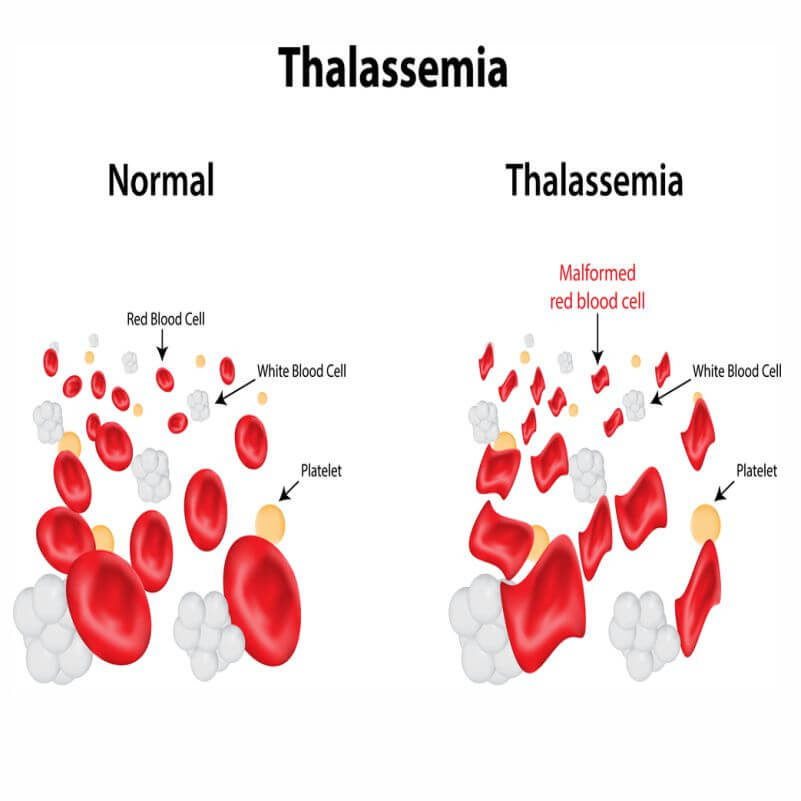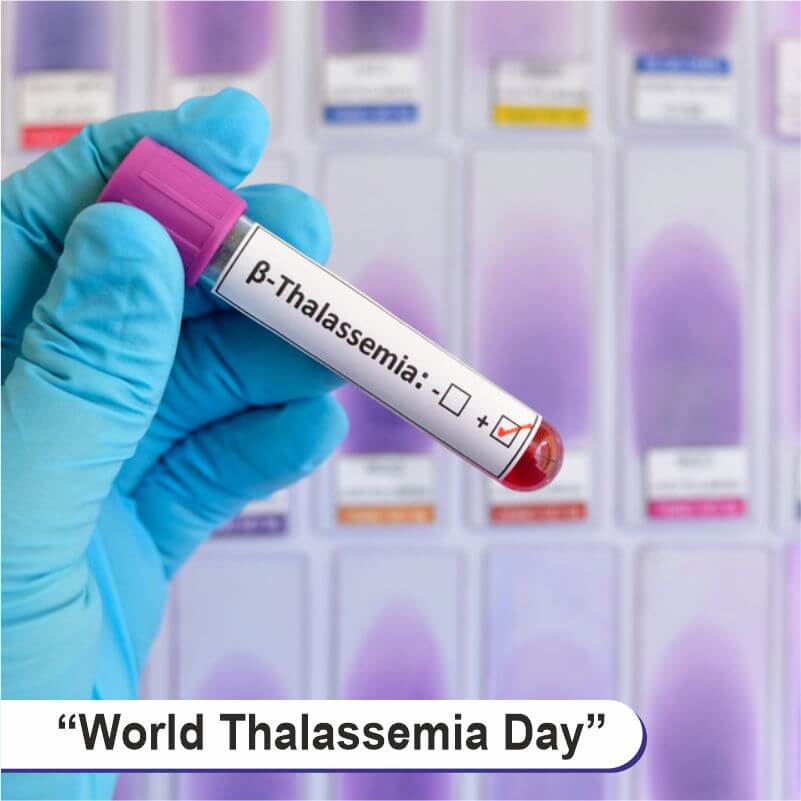World Thalassemia Day is observed globally on May 8th every year. This day is marked to raise awareness about thalassemia disease, its preventive measures and ways to avoid transmission and the importance of vaccination for children’s health and society throughout the world. The official theme for the International Thalassaemia Day 2021 is entitled ”Addressing Health Inequalities Across the Global Thalassaemia Community." The theme documents the current state of healthcare provided to patients with thalassemia across the world and highlights the vast inequalities and unmet needs that afflict them.
Thalassemia is an inherited blood disorder that causes your body to produce less hemoglobin than usual levels. Hemoglobin is an oxygen-carrying protein that enables red blood cells to carry oxygen. Having thalassemia can cause anemia, leaving you fatigued at most times.
Symptoms of Thalassemia:
The symptoms of thalassemia can vary. Some of the most common ones include:
Not everyone has visible symptoms of thalassemia. Signs of the disorder also tend to show up later in childhood or adolescence. There are also terms for how serious thalassemia in an individual is. A person with a thalassemia trait or minor form may not have symptoms or only mild ones. They may not need treatment. Someone with a major form will need medical treatment.
Causes of Thalassemia:
Thalassemia occurs when there’s an abnormality or mutation in one of the genes involved in hemoglobin production. You inherit this genetic abnormality from your parents. You can’t catch thalassemia the way you catch a cold or the flu.
If only one of your parents is a carrier for thalassemia, you may develop a form of the disease known as thalassemia minor. If this occurs, you probably won’t have symptoms, but you’ll be a carrier. Some people with thalassemia minor do develop minor symptoms.If both of your parents are carriers of thalassemia, you have a greater chance of inheriting a more serious form of the disease.
It’s more common in people from Asia, Africa, the Middle East, and Mediterranean countries like Greece or Turkey.
Diagnosis and Treatment:

If the parents see symptoms of thalassemia in their child, or if the parents themselves suffer from it, the child should be taken to a doctor to get a proper medical diagnosis. Children with moderate to severe thalassemia usually have symptoms by age 2.
If a doctor suspects thalassemia, you’ll take blood tests. One is a CBC (complete blood count) test. The other is a hemoglobin electrophoresis test. Patients with mild thalassemia may not require treatment but those with severe thalassemia require regular blood transfusions to cope with the condition. Medicines and supplements are also required for a normal life.
Thalassemia in children, as well as adults, is impossible to prevent since it is a genetic disorder. Thus, it is significant to get it diagnosed well in time, to prevent further problems.
Steps to take at Home:
If you have thalassemia, follow these habits to stay well:
To commemorate World Thalassemia Day, several events are organized in schools, colleges, and on online platforms to raise proper awareness about this disease. People with thalassemia should be treated as equals and must be given proper opportunities and treatments.
Child Help Foundation, under its Emergency Medical Support program, supports the treatments of children with thalassemia, who belong to underprivileged families. We ensure that these children get the best treatments under the best medical professionals in the country.

1) Sinjini Pandey is the 1-year-old baby girl of Saikal Pandey who works in a private company, and Rituparna Pandey who is a housewife. Sinjini was diagnosed with Thalassemia Major right after her birth and was admitted to Rajiv Gandhi Cancer Institute and Research Center for her treatment. The doctors said that she needed a Stem cell transplant which would cost Rs 15,00,000/-. Having no fixed income, Sinjini's father could not arrange the finances for the baby's treatment. They got in touch with Child Help Foundation for help. After the necessary verifications, CHF supported Sinjini’s treatment by raising the amount required for the transplant.

2) Aaradhya Sathe, the 5-year-old daughter of Mr.Sanjay and Rina Sathe, is the youngest among her siblings. She has an elder brother of 15 years and an elder sister of 17 years. Her father works in a petrol pump with a very low income and her mother is a housewife. She suffers from Thalassemia Major. Doctors said that she would require a Bone Marrow Treatment (BMT) surgery to fix Thalassemia which would cost ? 10,50,000. When CHF was notified about this case by the Medical Support Worker (MSW), the team did a thorough background check and started raising funds to help the little girl. Aaradhya’s sister was her BMT donor. Her Bone Marrow Transplant was done in Kokilaben Dhirubhai Ambani Hospital, Mumbai. After the transplant, she was kept under observation for about 22 days in the BMT ward. Aradhya’s BMT was successful and she is gradually recovering.
